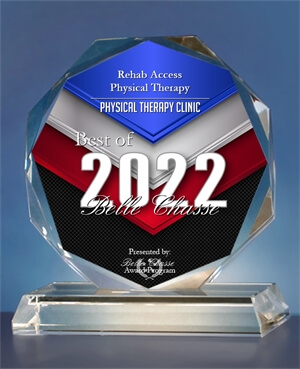Concussions are a type of traumatic brain injury (TBI), and the professional sports world has been especially intent on reducing concussions. Yet impact sports aren’t the most common cause of concussions for those of us who don’t play professional sports. Research shows that about 49% of the TBIs in 2017 were related to unintentional falls. Car accidents accounted for another nearly 25% of TBIs.
People who develop a concussion tend to experience a range of symptoms. Two of the most common concussion symptoms that physical therapy seeks to address are vertigo and dizziness.
3 ways concussion physical therapy can help your vertigo and dizziness
Vertigo and dizziness are two terms that are used interchangeably, but they aren’t the same thing. Vertigo is the sensation that you have of the environment moving or spinning around you. Dizziness is a sensation of being physically off balance. Concussion sufferers who develop these two symptoms can turn to a specific type of physical therapy for help. That type of physical therapy is vestibular therapy or vestibular rehab.
Here are three ways that vestibular physical therapy can help address your concussion-related vertigo and dizziness:
- Educating you about the source of your symptoms — Vertigo and dizziness can be triggered by the same forces that caused your concussion. Your inner ear contains natural calcium carbonate deposits or canaliths. The same forces that caused your concussion can cause canalith particles to break free and go floating about in the inner ear. This is a condition called benign paroxysmal positional vertigo (BPPV). The movement of these particles can send false signals to the balance center of the brain. The result is typically sensations of vertigo and dizziness.
- Repositioning canalith particles — Physical therapists can use a technique called canalith repositioning to help get free-floating canalith pieces under control. In turn, this can help ease your dizziness and vertigo. One type of canalith repositioning that physical therapists can use is called the Epley maneuver. By using this technique to manipulate a patient’s head and body position, physical therapists can help reduce concussion-triggered BPPV with a 95% success rate.
- Helping to stabilize your vision — Your vision can be a casualty of concussion-triggered BPPV. The false signals triggered by free-floating canalith particles can make it harder to focus your eyes on objects. Your physical therapist can create a series of gaze stabilization exercises for you. These exercises can help you stabilize your vision more quickly if you are struck by vertigo.
Find exceptional concussion physical therapy at Rehab Access
Keen to find concussion physical therapy that can effectively address symptoms like vertigo and dizziness? You can find what you’re seeking at one of our Rehab Access Physical Therapy clinics. Our clinics offer free screenings that can help you begin your recovery process. They’re also the home of our experienced physical therapists. These physical therapy experts can build you a concussion treatment plan that’s customized to fit your recovery needs and goals.
Contact our team today for more information about how we can help address your concussion or to schedule an initial appointment.



